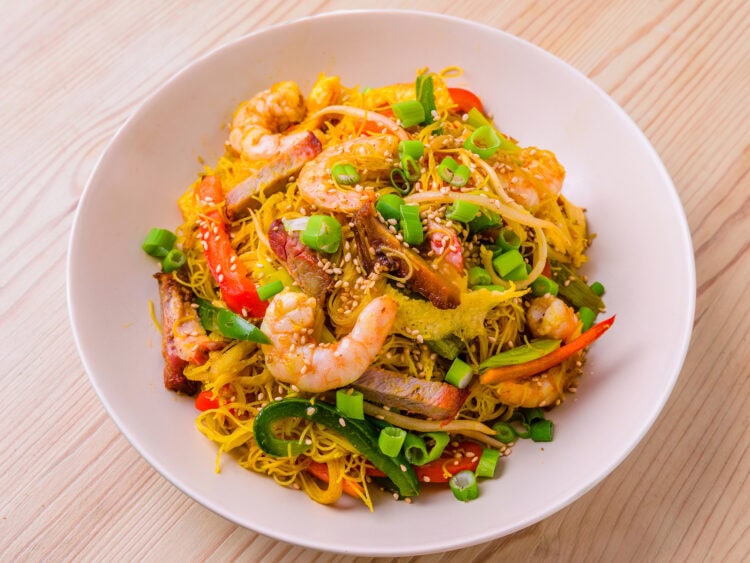Delicate rice noodles stir-fried in a fragrant curry sauce
Curry? Yep, you read that correctly. To be honest, nothing is right about these noodles.
They are called Singapore noodles even though absolutely nothing connects them to Singapore (they were invented in Hong Kong); they use curry, an ingredient that is uncommon in Chinese or Hong Kong cooking; there is Cantonese char siu, rice vermicelli more typical of Vietnam or Thailand… anyway, you get the idea.
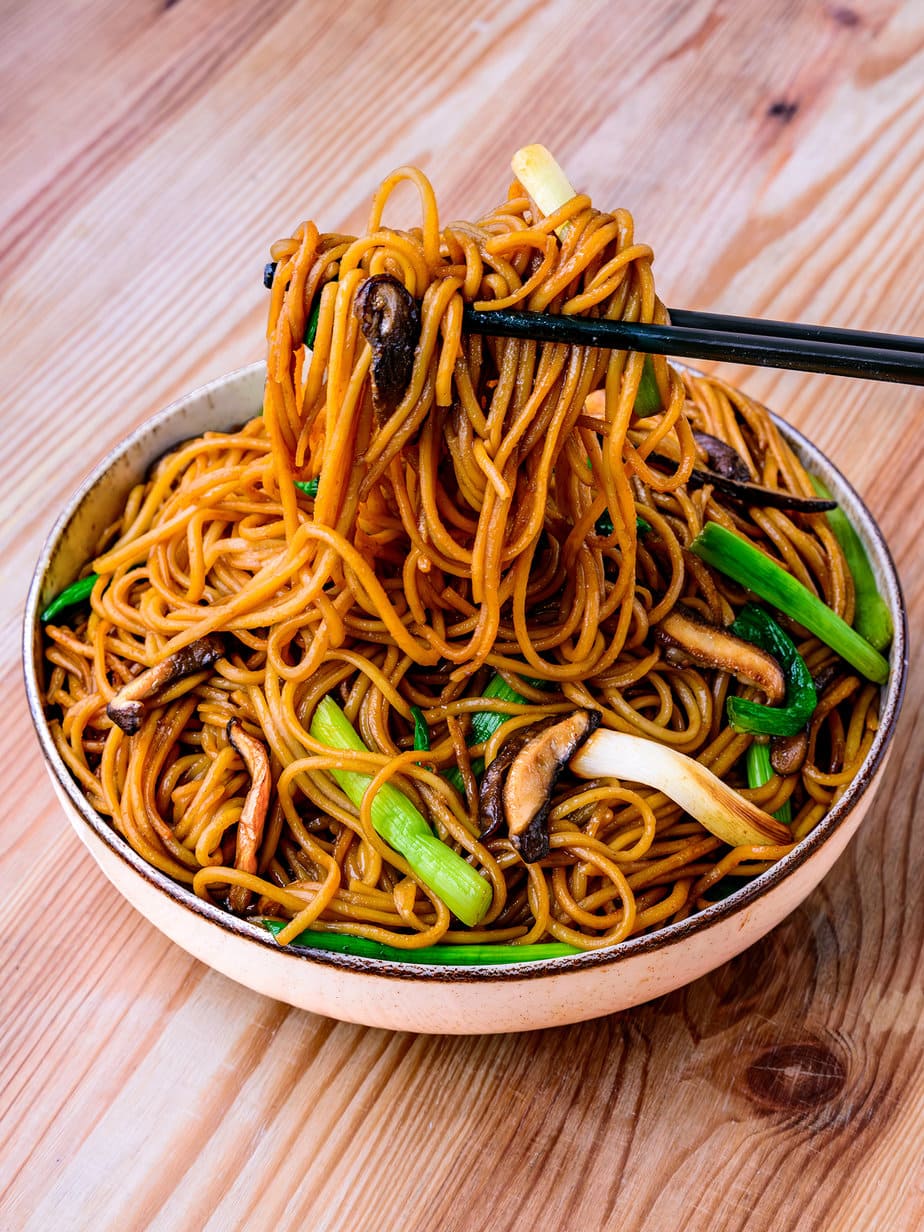
Still, it is delicious, and whatever its origins, we are going to enjoy it.
Some amusing names in Cantonese cuisine
The bloggers at Chinese Cooking Demystified (my main source for this article) list a few other oddly named dishes in Chinese cuisine: Swiss chicken wings, which are wings braised in a sweet, seasoned soy sauce. Not exactly a Zurich specialty!
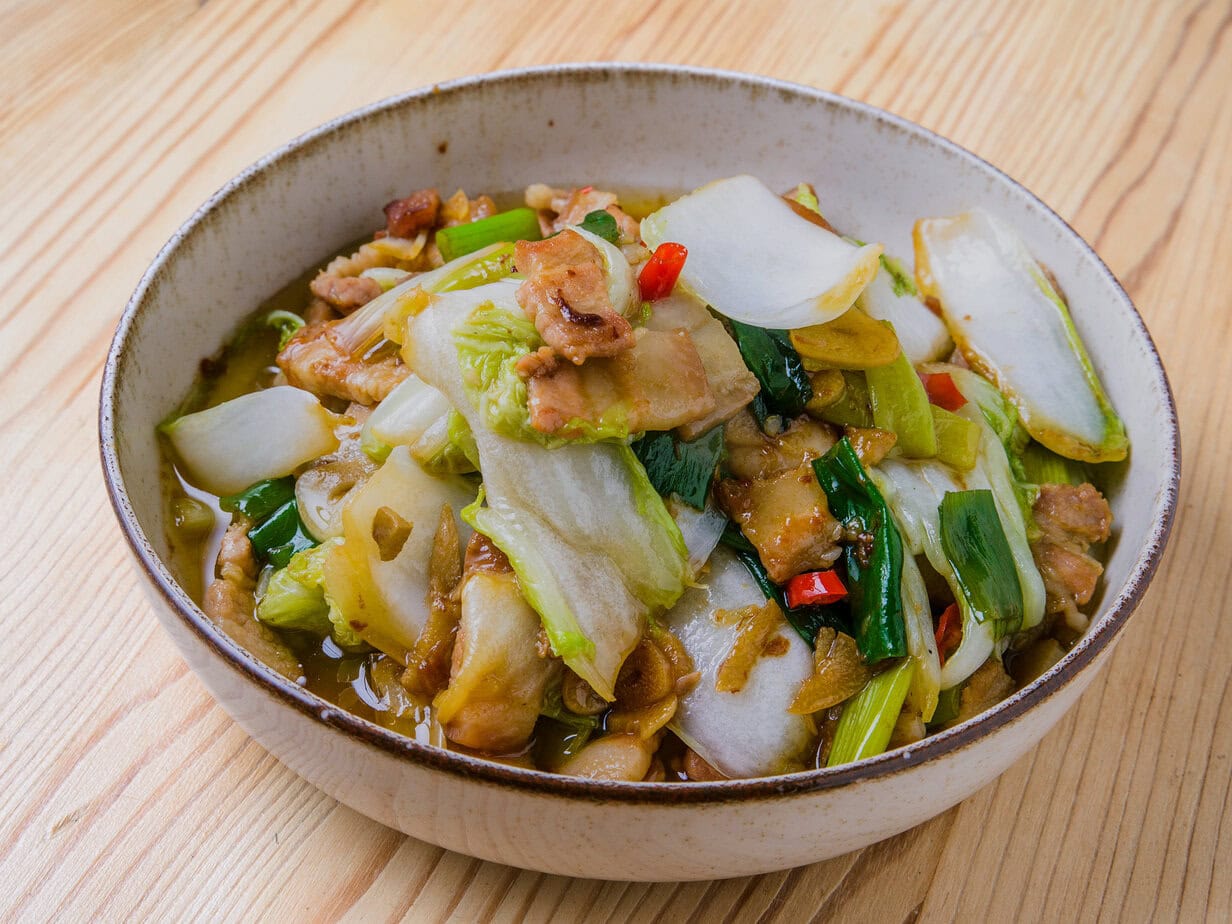
You will also see Portuguese roast chicken on some restaurant menus, which, unsurprisingly, has nothing Portuguese about it…
Key ingredients in Singapore noodles
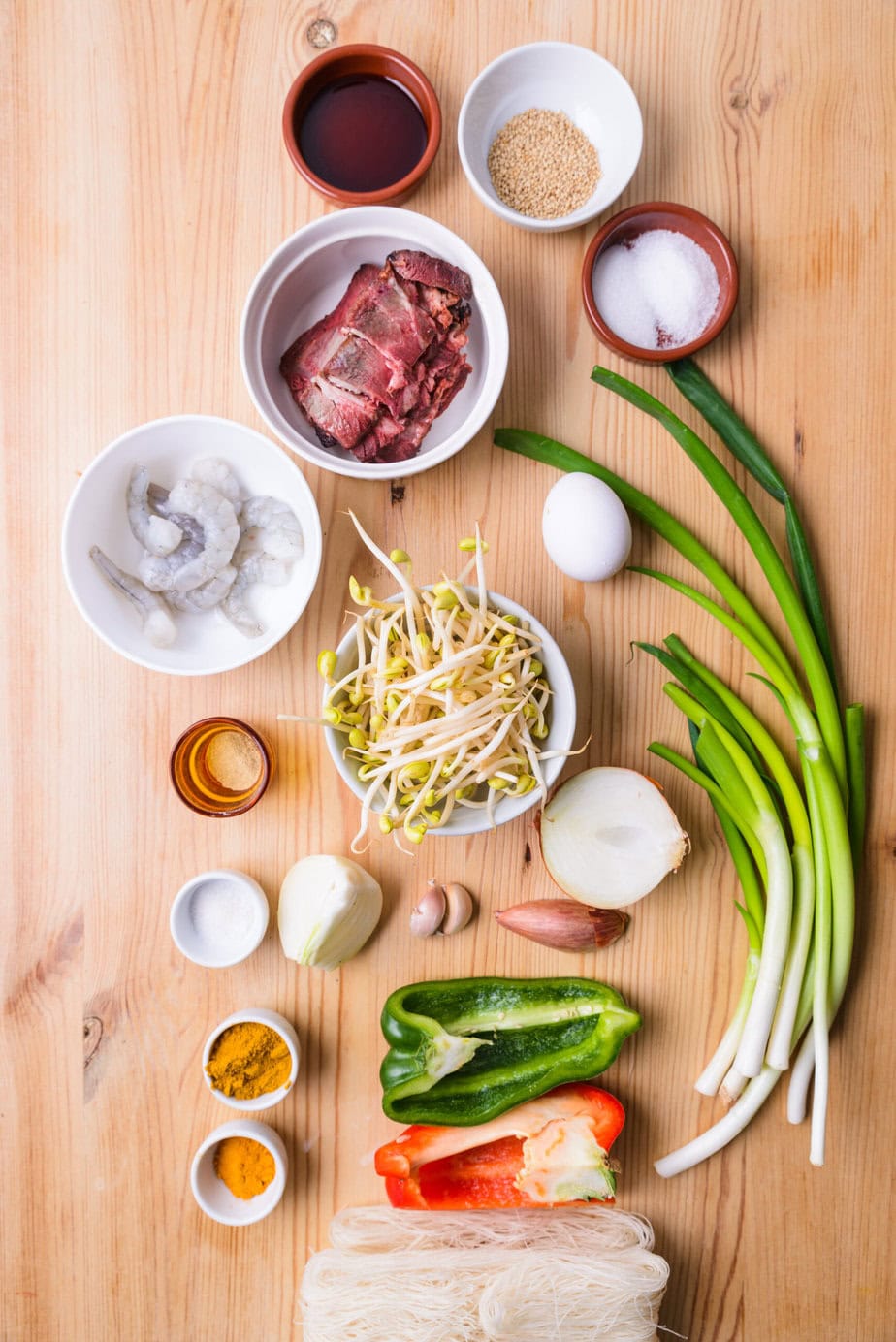
Rice noodles : These thin, light Asian vermicelli absorb the flavours of the dish while retaining a delicate texture. They serve as the base for the stir-fry.
Light soy sauce : A salty soy sauce that adds depth of flavour without making the dish heavy.
Sesame seeds : They lend a bit of crunch and a subtle nutty aroma as a finishing garnish for the dish.
Madras curry powder : A spice blend from India made with turmeric, cumin, coriander, and other fragrant spices. It brings a spicy, aromatic flavour to the dish.
Turmeric : An orange-yellow spice that intensifies the colour of the dish and adds a slight earthy bitterness. It is optional but boosts the curry flavour.
Char siu : Chinese barbecued pork that is marinated and roasted, known for its sweet-savory taste and distinctive red colour. It adds umami and a tender texture to the stir-fry.
Shrimp : They bring a gently sweet seafood flavour and a firm texture that contrasts with the noodles and vegetables. Use them raw.
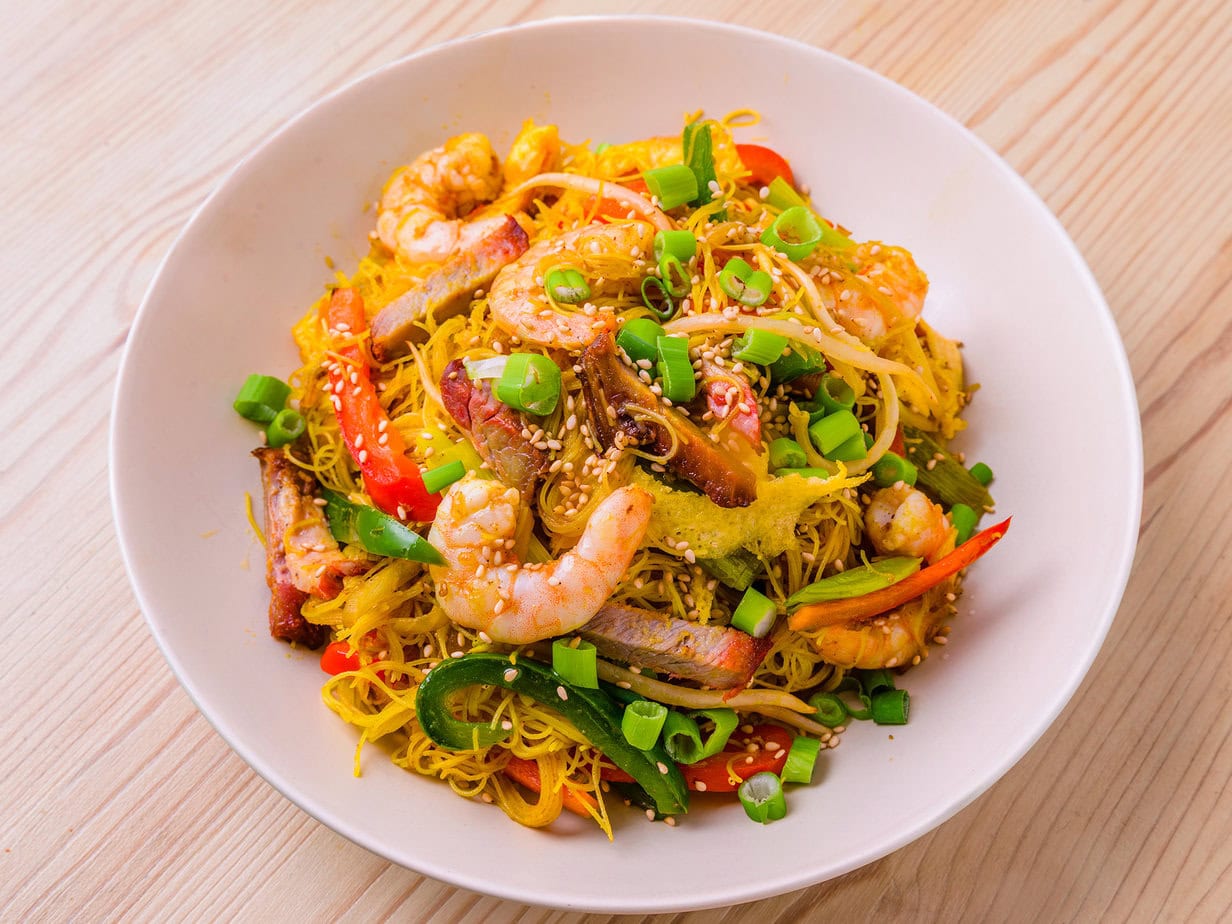
Authentic Singapore Noodles
Equipment
Ingredients
- 180 g rice vermicelli dry weight. Opt for loosely packed bundles; tightly compressed noodles tend to break.
Curry Aromatics
- 1 tablespoon Madras curry powder
- 0.5 teaspoon ground turmeric optional
- 2 cloves garlic finely minced
- 0.5 shallot finely minced
- 1 tablespoon onion finely minced
Vegetables & Toppings
- 8 stalks white part of scallions cut into 5 cm (2-in) lengths
- 80 g mung bean sprouts trimmed—pinch off the bean and wispy tail, if present
- 0.25 onion thinly sliced
- 50 g red bell pepper julienned (thin strips)
- 50 g green bell pepper julienned (thin strips)
Proteins
- 50 g char siu (Chinese barbecued pork) julienned
- 50 g shrimp marinated (see below)
Shrimp Marinade
- 0.25 teaspoon salt
- 0.25 teaspoon white pepper freshly ground
Egg Omelet
- 1 egg made into a thin omelet and sliced into ribbons
Stir-Fry Seasoning
- 1 teaspoon salt
- 0.5 tablespoon sugar
- 1 teaspoon light soy sauce
Garnishes
- white sesame seeds
- green parts of scallions thinly sliced
Instructions
Make the Egg Omelet
- Beat the egg in a small bowl. Heat a wok or large skillet over medium heat with 1 tablespoon of oil.1 egg

- When the oil is shimmering, pour in the beaten egg.
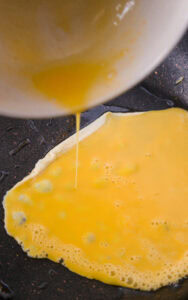
- Swirl the pan to coat the surface and cook until just set, about 45 seconds.
- Turn off the heat, cover, and let the omelet steam for 2 minutes.
- Roll the omelet up, cut it in half, then slice into thin ribbons. Set aside.
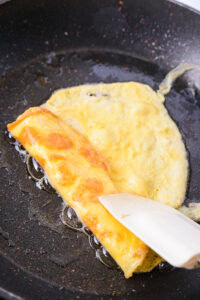
Preparation
- Trim the bean sprouts, cut the scallions, slice the onion, and julienne the char siu and bell peppers.80 g mung bean sprouts, 8 stalks white part of scallions, 0.25 onion, 50 g char siu (Chinese barbecued pork), 50 g red bell pepper, 50 g green bell pepper
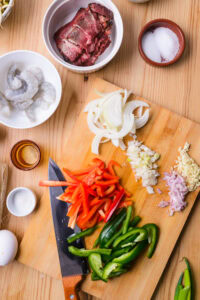
- Finely mince the garlic, shallot, and onion for the curry base.
- Toss the shrimp with the salt and white pepper and let marinate for 10 minutes.0.25 teaspoon salt, 0.25 teaspoon white pepper
Cook the Noodles
- Bring a large pot of water to a boil, add the rice vermicelli, and cook for 1 minute 30, stirring gently. Drain without rinsing.180 g rice vermicelli
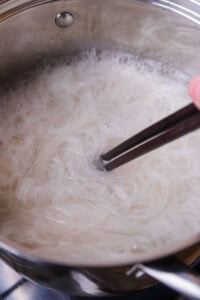
- Spread the noodles on a tray or in a colander lined with a tea towel (or cover with plastic wrap).

- Let them steam in their own heat for about 10 minutes.
- If they clump, gently separate the strands with your fingers.
Stir-Fry the Components
- Heat a lightly oiled wok over medium-high heat and stir-fry the sliced onion for 30 seconds.
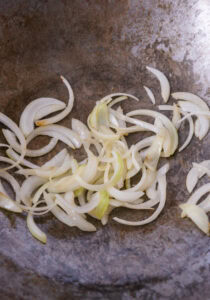
- Add the bell peppers and cook for 15 seconds more. Transfer to a plate.

- Without cleaning the wok, sauté the bean sprouts over medium-high heat for about 1 minute. Set aside.
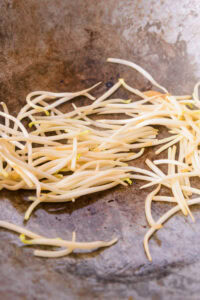
- Add a splash of oil, then stir-fry the shrimp for about 45 seconds, just until they turn pink. Remove and set aside.50 g shrimp
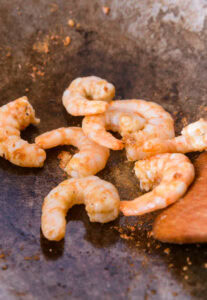
Build the Curry Base
- Return the wok to medium heat, add a little oil, and sauté the minced onion for 1 minute.1 tablespoon onion
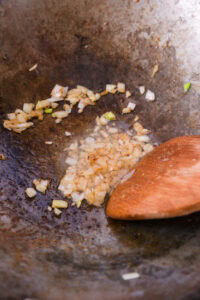
- Add the garlic and shallot and cook until fragrant and translucent, about 1 minute.2 cloves garlic, 0.5 shallot
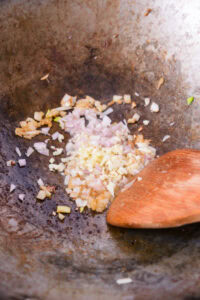
- Stir in the scallion whites and cook for 45 seconds.

- Sprinkle in the curry powder and turmeric, drizzle in a little more oil, and cook for about 3 minutes, stirring, until the spices are toasted and fragrant.1 tablespoon Madras curry powder, 0.5 teaspoon ground turmeric
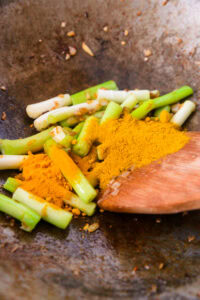
Combine & Finish
- Add the noodles and increase the heat to medium-high, tossing constantly to loosen the strands.
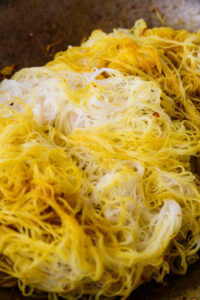
- Season with salt, sugar, and soy sauce and toss for 15–30 seconds to coat evenly.1 teaspoon salt, 0.5 tablespoon sugar, 1 teaspoon light soy sauce
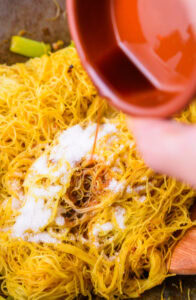
- Return the onion, bell peppers, and bean sprouts to the wok and toss for about 15 seconds.
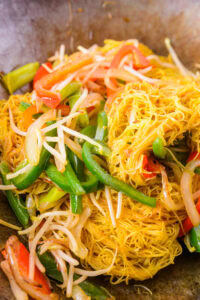
- Add the char siu and shrimp; stir-fry for another 30 seconds.
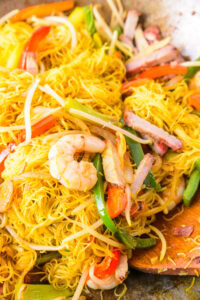
- Add the omelet ribbons and give everything a quick toss.
- Turn off the heat, transfer to a serving platter, and garnish with sesame seeds and sliced scallion greens.white sesame seeds, green parts of scallions
Video
Notes
Nutrition
Culinary sources
For this recipe, I started with the version from the bloggers “Chinese Cooking Demystified” and made a few minor tweaks
